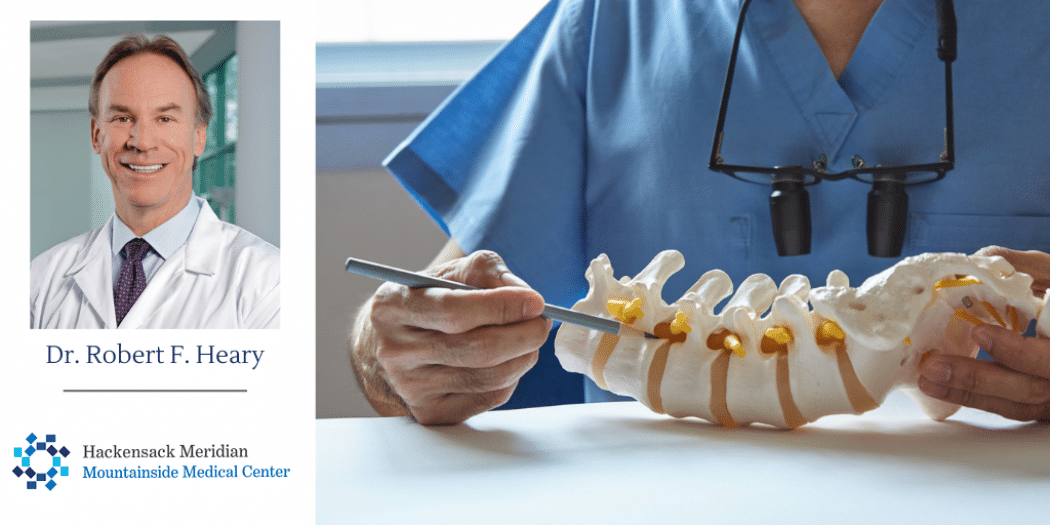Spine surgery may sound scary, but for many people living with failed back surgery syndrome (FBSS), revision spine surgery is a welcomed procedure that may improve their quality of life in ways they have not experienced in years.
Medical Director of Mountainside Medical Center’s Spine Program, Robert F. Heary, M.D., is a board-certified neurosurgeon, who specializes in revision spine surgery, spine and spinal cord injury, spine and spinal cord tumors and spinal deformity.
When asked about revision spine surgery, this is what he had to say:
“The purpose of revision spine surgery is to take a patient with an unacceptable level of pain and diminished function due to previous spine surgery and improve that,” Dr. Heary said. “While revision surgeries resulting in zero pain are best, it’s not 100 percent likely. The goal is less pain, so they can go back to daily living. Usually, if there are problems or worsening issues 6-24 months after the initial surgery, we can evaluate patients with a CT, MRI, X-ray and, or a clinical evaluation to determine if they would be a candidate for revision surgery. Often it’s people who might have had a fusion or instrumentation that are likely candidates.”
Revision spine surgery has the potential to be a life-altering procedure for individuals with diminished functioning and increased pain, and how it works may surprise you.
“Reasons for undergoing the procedure may include chronic back pain, numbness or sensation loss, a shooting pain, weakness and, though uncommon, sometimes bowel and bladder function troubles,” Dr. Heary said. “Our goal with the surgery is to make sure that the patient is decompressed, meaning their nerves are not being pressed on, stabilized, making sure that all the screws and rods are in place correctly, and fused, making sure the bones are fused correctly. This takes pressure off of the screws and rods and “takes away” the pain generator. This allows the patient to feel better, relatively pain-free. The target is to improve the quality of life.”
Dr. Heary warns individuals to be diligent and thorough in their efforts and work with experienced doctors when exploring options for revision spine surgery.
“First, individuals should be evaluated by someone very experienced, specifically in revisions,” Dr. Heary said. “It’s worth trying to work through conservative, non-operative measures first such as physical therapy and pain management options, particularly if it’s pain. After surgery, there is typically some physical therapy which can be effective but may take time to work.”
Revision spine surgery is a big decision for some, while others see it as their only option. It’s important to speak to experienced medical professionals who are comfortable with revision surgery and understand its implications to ensure quality care.
“Many patients seen for revision spine surgery are there because of failed minimally invasive surgeries,” Dr. Heary said. “Revision surgery is harder than the primary surgery. Each time you have surgery, it becomes harder and harder to get a positive result. Going to a doctor who is comfortable with revision surgery – because the anatomy is altered after primary surgery – will typically result in the best outcomes.”
If you are suffering from back or leg pain, consult with a neurosurgeon at Mountainside Medical Center’s Neuroscience Institute. Click here or call 888-973-4674 for more information.

